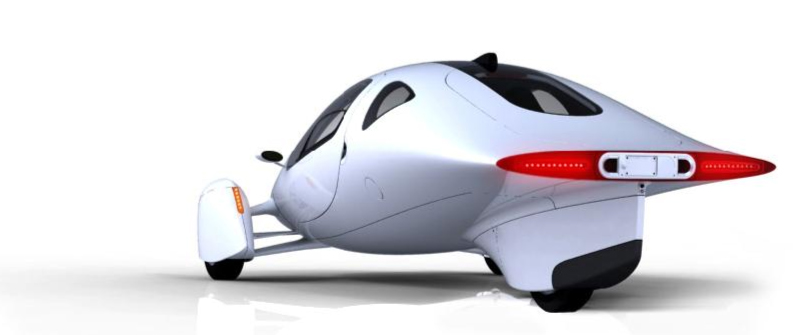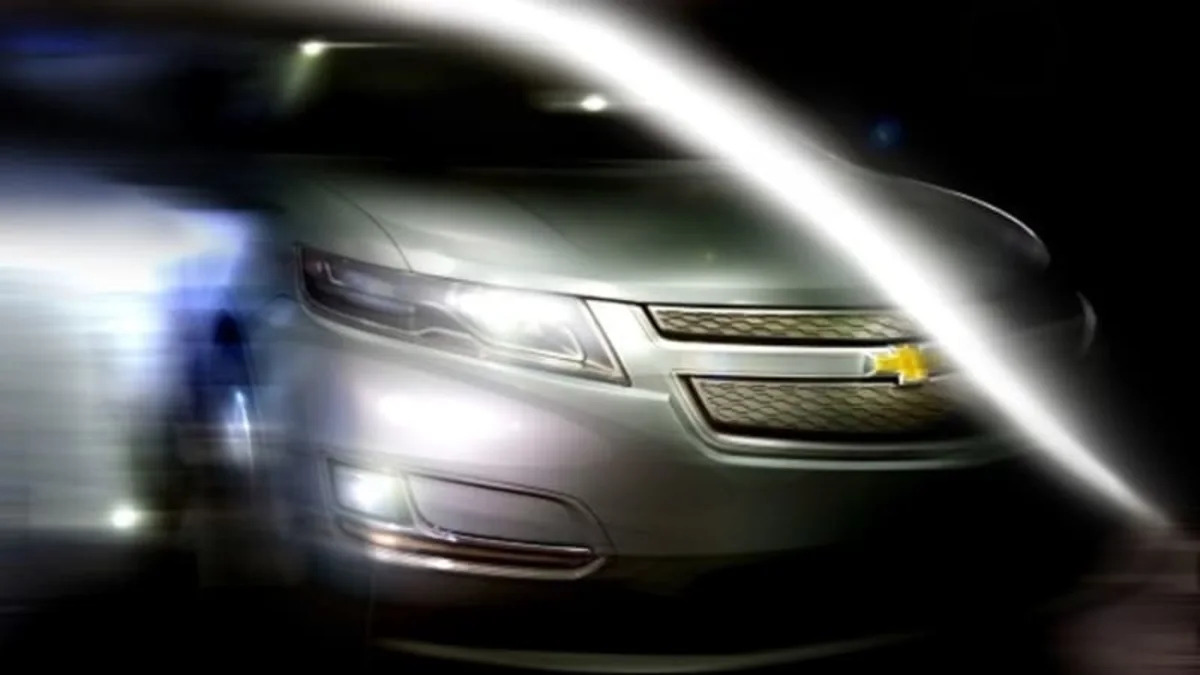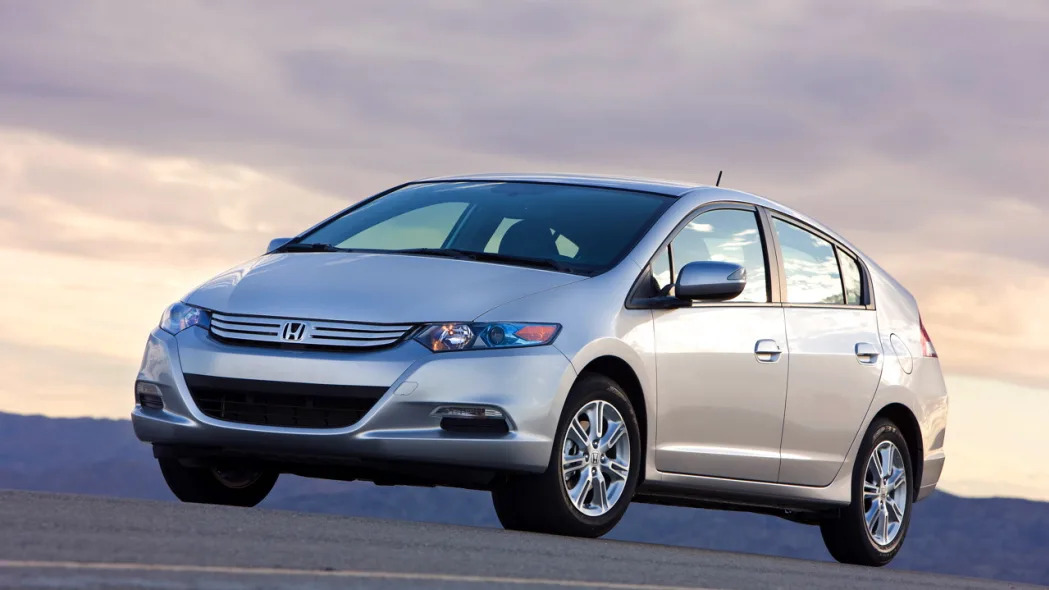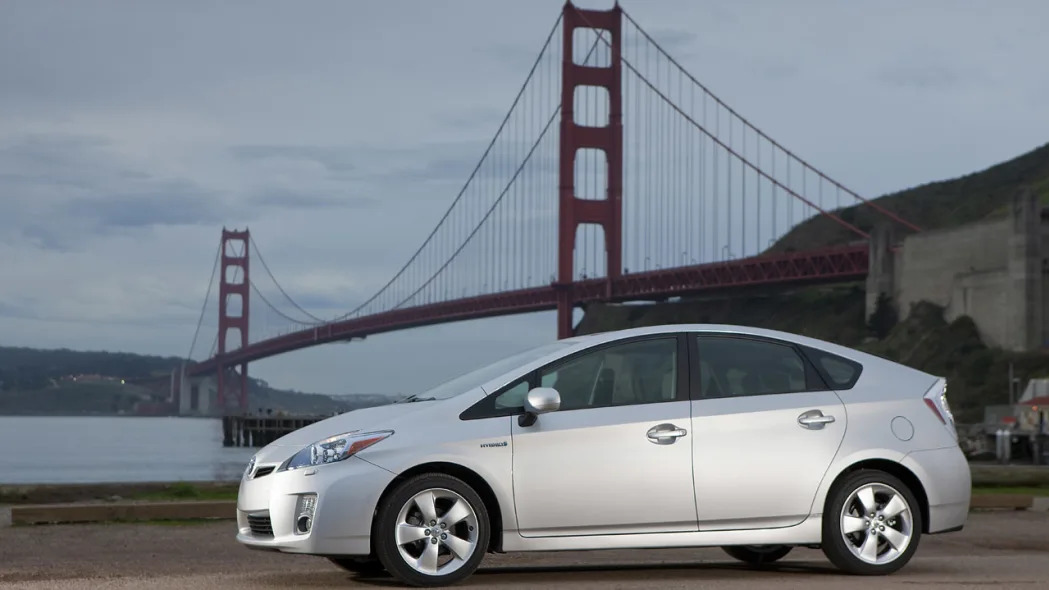Aerodynamics. When discussing overall efficiency, sometimes it's easy to overlook just how important the shape of an automobile is in determining how fuel efficient it is. Aerodynamics is the reason that the new Honda Insight looks so similar to the Toyota Prius and it's also the reason that the production version of the Chevy Volt looks so different from the concept that we grew to love after its introduction back at the 2007 Detroit Auto Show. So, what's the big deal?
 First, let's discuss what the term aerodynamics means. According to Merriam-Webster, aerodynamics is "a branch of dynamics that deals with the motion of air and other gaseous fluids and with the forces acting on bodies in motion relative to such fluids." Clear as mud? In this case, the fluid we're talking about is indeed air, and the easier it is for an object to cut through the air, the less energy is required to keep that body in motion.
First, let's discuss what the term aerodynamics means. According to Merriam-Webster, aerodynamics is "a branch of dynamics that deals with the motion of air and other gaseous fluids and with the forces acting on bodies in motion relative to such fluids." Clear as mud? In this case, the fluid we're talking about is indeed air, and the easier it is for an object to cut through the air, the less energy is required to keep that body in motion.
Let's move on. Click past the break to keep reading.
For the purpose of comparing different automotive designs, engineers measure the resistance of a body to flow through the air using computational fluid dynamics simulations and wind tunnel testing. A flat board held perpendicular to the air flow may have a coefficient of 1 or more, depending on the shape of the edges and the surface texture. The drag coefficient is a unitless number and is based on the shape and surface properties of the object. Two identical objects that are different sizes will have the same cD. However, that doesn't mean they have the same overall drag.
For that you need to factor in the frontal area. The frontal area is the surface of the car's skin that is in direct contact with oncoming air. This has been true since the existence of the automobile and automakers have been grappling with it for years.
This, of course, is further complicated by the vagaries of the real world. The addition of items like outside mirrors, windshield wipers and radio antennas can cause a lot of disruption to air-flow. There is also the fact that cars often don't travel perpendicular to air-flow. Vehicles often encounter cross-winds when driving down the road so the airflow must be measured at various angles to ensure resistance is kept to a minimum.
Safety is also a concern.The air-flow over a vehicle's body can trigger either lift or down-force just as it does with an aircraft wing. If a vehicle's shape causes too much lift, it can make the vehicle unstable and difficult to control. All of these factors must be balanced in the final design.

The designers of all of the most fuel efficient vehicles ever offered for sale have taken aerodynamics very seriously and as such, they all have a very favorable cD. For instance, the GM EV1 scored a cD of 0.195, which is quite good. For comparison, the 2010 Toyota Prius manages a fine 0.25 and the Aptera 2e (above) blows them both out of the water air with an amazingly low 0.15. When multiplied by the car's frontal area, the Aptera design scores even better due to its narrow, bullet-like shape with narrow out-rigger front wheels that are completely shrouded . For what it's worth, the brick-shaped HUMMER H2 scores a dismal 0.57 – further proof that its designers were in no way concerned with its fuel efficiency.
Besides the actual bodywork of an automobile, there are other factors contributing to the overall coefficient of drag any given car is able to register, including the car's tires and its ride height. Wide tires move more air and therefore take more power to move, and the air pressure of a given tire can have drastic consequences on its ability to roll.
Why is all of this so important? Calculations reveal that about 60 percent of the energy used to move the average car goes towards overcoming its aerodynamic drag. That's huge, and means that even small improvements in a car's cD can pay big dividends in overall fuel efficiency.
 First, let's discuss what the term aerodynamics means. According to Merriam-Webster, aerodynamics is "a branch of dynamics that deals with the motion of air and other gaseous fluids and with the forces acting on bodies in motion relative to such fluids." Clear as mud? In this case, the fluid we're talking about is indeed air, and the easier it is for an object to cut through the air, the less energy is required to keep that body in motion.
First, let's discuss what the term aerodynamics means. According to Merriam-Webster, aerodynamics is "a branch of dynamics that deals with the motion of air and other gaseous fluids and with the forces acting on bodies in motion relative to such fluids." Clear as mud? In this case, the fluid we're talking about is indeed air, and the easier it is for an object to cut through the air, the less energy is required to keep that body in motion.
Let's move on. Click past the break to keep reading.
For the purpose of comparing different automotive designs, engineers measure the resistance of a body to flow through the air using computational fluid dynamics simulations and wind tunnel testing. A flat board held perpendicular to the air flow may have a coefficient of 1 or more, depending on the shape of the edges and the surface texture. The drag coefficient is a unitless number and is based on the shape and surface properties of the object. Two identical objects that are different sizes will have the same cD. However, that doesn't mean they have the same overall drag.
For that you need to factor in the frontal area. The frontal area is the surface of the car's skin that is in direct contact with oncoming air. This has been true since the existence of the automobile and automakers have been grappling with it for years.
This, of course, is further complicated by the vagaries of the real world. The addition of items like outside mirrors, windshield wipers and radio antennas can cause a lot of disruption to air-flow. There is also the fact that cars often don't travel perpendicular to air-flow. Vehicles often encounter cross-winds when driving down the road so the airflow must be measured at various angles to ensure resistance is kept to a minimum.
Safety is also a concern.The air-flow over a vehicle's body can trigger either lift or down-force just as it does with an aircraft wing. If a vehicle's shape causes too much lift, it can make the vehicle unstable and difficult to control. All of these factors must be balanced in the final design.

The designers of all of the most fuel efficient vehicles ever offered for sale have taken aerodynamics very seriously and as such, they all have a very favorable cD. For instance, the GM EV1 scored a cD of 0.195, which is quite good. For comparison, the 2010 Toyota Prius manages a fine 0.25 and the Aptera 2e (above) blows them both out of the water air with an amazingly low 0.15. When multiplied by the car's frontal area, the Aptera design scores even better due to its narrow, bullet-like shape with narrow out-rigger front wheels that are completely shrouded . For what it's worth, the brick-shaped HUMMER H2 scores a dismal 0.57 – further proof that its designers were in no way concerned with its fuel efficiency.
Besides the actual bodywork of an automobile, there are other factors contributing to the overall coefficient of drag any given car is able to register, including the car's tires and its ride height. Wide tires move more air and therefore take more power to move, and the air pressure of a given tire can have drastic consequences on its ability to roll.
Why is all of this so important? Calculations reveal that about 60 percent of the energy used to move the average car goes towards overcoming its aerodynamic drag. That's huge, and means that even small improvements in a car's cD can pay big dividends in overall fuel efficiency.
There's always a bit of a struggle when designing automobiles due to the desire to cheat the wind while remaining different from its competitors. As mentioned in the opening paragraph, Honda took a bit of flack when its revived Insight was first introduced because many people instantly recognized its silhouette as a copy of the Toyota Prius. That's because Toyota's engineers did an admirable job of ensuring a favorable coefficient of drag, and Honda couldn't do anything about the lookalike effect because they wanted an aerodynamic vehicle as well.
Another prime example of an automaker's efforts to improve aerodynamics is that of the plug-in Chevy Volt. The Volt's design team, led by Bob Boniface, did an excellent job of making a concept car that instantly struck a chord with show-goers. Unfortunately, that concept left a lot to be desired once it hit the wind tunnel, with Bob Lutz famously suggesting that it performed better going backwards that forwards. After a ton of work smoothing out the car's design, GM's engineers managed to revise the Volt's shape enough to score a cD of around 0.27, which is a major improvement over the original concept's 0.43. For the Volt, aerodynamics were more important than weight in increasing the electric-only range of the car. GM engineers found that a 400-pound decrease would increase the EV-only range of the Volt from 39 miles to 40 on the highway and 41 to 43 in the city. But improved aerodynamics (of 80 counts, which could mean going from a cD of .400 to .320, for example) upped the range from 37 to 43 miles on the highway and 40 to 43+ in the city.
Hopefully you now see just how important a vehicle's aerodynamics are to its overall efficiency. The next time you go shopping for a car, pay attention to its highway fuel economy to see just how it relates to the car's ability to slice cleanly through the air.




Sign in to post
Please sign in to leave a comment.
Continue